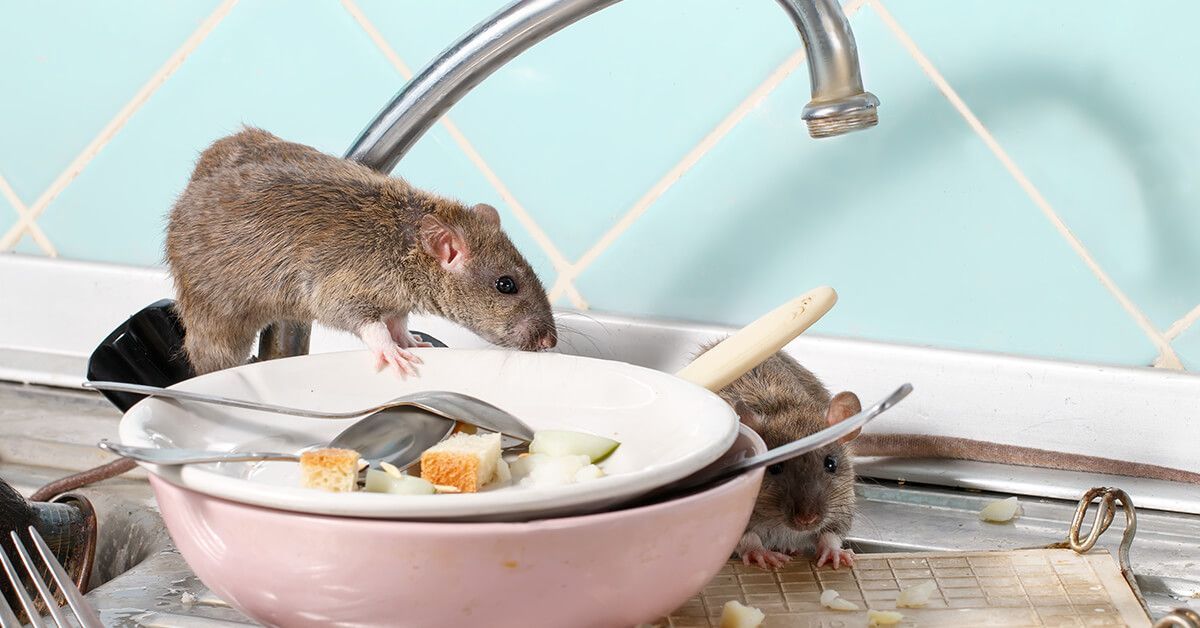Did you know that a pencil eraser is larger than bed bugs, which are just 5 millimeters wide. These bugs are intelligent, resilient, and reproduce rapidly. Bed Bugs may go months without eating and are aware of where to hide to avoid detection. 500 eggs can be laid by a female in her lifetime.
It should come as no surprise that these little bloodsuckers can get very messy in your house. They may leave red, itchy welts all over your body if they visit you in bed.
Is It Possible To Eliminate Bedbugs On Your Own?
Bed Bugs may be eliminated. Try to have patience, as getting rid of bedbugs frequently requires some time and work. If your infestation is severe, you may need to attempt a couple different chemical and non chemical methods.
Bedbug removal may be more challenging due to several variables. If your house is cluttered or if you frequently travel and bring new bedbugs home in your baggage, it could be harder to get rid of them.
You might need to hire an exterminator if you are unable to get rid of them on your own. Continue reading for a step-by-step guide on bed bug removal.
Step 1: Find every infestation site.
If you have bed bugs, you should find them as soon as possible before they begin to multiply. A minor infestation is significantly simpler and less expensive to cure than a large one. Smaller infestations, however, may be more difficult to find.
Hire a professional to do an inspection or conduct your own search for bedbugs. To find bedbugs by scent, some inspectors employ specially trained dogs.
Bedbugs can get into tight spaces like the folds of curtains and the seams of a mattress or couch because of their thin and narrow bodies.
Additionally, keep an eye out for them:
- Close to the mattress and box spring tags
- The headboard and bed frame both have cracks.
- around baseboards
- Between pillows on a couch
- joints in furniture
- electrical outlets inside
- beneath loose wallpaper
- beneath wall-mounted artwork and posters
- near the joint where the ceiling and the wallpaper meet
Examine each of these areas with a flashlight and magnifying lens.
Bedbug signs include the following:
- Reddish and approximately a quarter-inch long live bedbugs
- These little, black dots are bed bug droppings and are roughly the size of a period.
- Your mattress has reddish stains caused by squashed bugs.
- Eggs, egg shells, and the yellowish skin that young bed bugs shed are tiny and pale yellow.
When a bedbug is discovered, place it in a sealed container with 1 teaspoon of rubbing alcohol. There are several bugs that resemble bed bugs. Bring any bugs you’re unsure of to an entomologist or exterminator for identification.
Step 2: Contain the infestation
Once you’ve identified your bedbug infestation, you must keep them contained until you can eradicate them. Using your vacuum to capture bedbugs is a quick and simple method. Search for any potential hiding spots using the vacuum.
This includes your:
- Bed
- Dresser
- Carpets
- Electronics, like TVs
The vacuumed contents should be placed in a plastic bag before being discarded. The vacuum should then be completely cleaned.
Until you can wash them, place all of your linens and damaged clothing in plastic bags. After that, set a washer and dryer to the highest temperature setting. In the event that something cannot be washed, dry it for 30 minutes on the maximum heat setting.
Put everything in a plastic bag if it can’t be cleaned in the washing and dryer. If you can, leave it there for a few months to ensure that all the bugs are dead.
Throw away furniture that you are unable to clean. To prevent anyone else from attempting to take it home, first tear it up and spray-paint the term “bedbugs” on it.
Step 3: Get Ready For Bed Bug Treatment
Make a little preparation before you begin treating your house to increase your chances of success. Ensure that all of your clothing, linens, carpets, draperies, and other hiding spots have been cleaned or disposed of (see step 2).
Eliminate bed bug hiding areas next:
- Pick up anything that is on the floor and beneath your bed, including books, magazines, clothing, and other items.
- Whatever you can, discard.
- You risk spreading the bugs if you move objects from an infested room to a clean one.
Seal up any open areas:
- Set loose wallpaper with glue.
- Fill up furniture cracks and baseboard gaps with caulk.
- Plug openings should be taped.
Finally, to prevent bedbugs from climbing on your bed, move it at least 6 inches away from the wall.
Step 4: Remove the bedbugs.
How to eliminate bedbugs in your house:
You can start by attempting a chemical-free bed bug extermination. High heat at 115°F (46.11°C) or extreme cold at 32°F (0°C) may easily kill these bugs.
These techniques can be used to treat bedbugs in the following ways:
For 30 minutes, wash your clothes and bedding in hot water. After that, dry them for 30 minutes at the maximum heat setting on a dryer.
Mattresses, sofas, and other areas where bedbugs hide should all be steam cleaned.
On a hot day that exceeds 95°F (35°C), pack infected objects in black bags and put them outside or in a closed car. It might take 2 to 5 months to eliminate sealed-up bugs in colder climates.
Bedbug-filled bags should be placed in the freezer at 0°F (-17.78°C). Check the temperature with a thermometer. Keep them there for a minimum of 4 days.
Make the space unpleasant for any remaining bedbugs once you’ve eliminated those that are visible. Your mattress and box spring should be covered with bedbug-proof material. All the way up, zip these coverings. The imprisoned bugs within will die, and new bugs won’t be able to enter.
You might need to use an insecticide if these techniques don’t completely get rid of the pests.
Nonchemical and chemical treatments
Bed Bugs may be removed from your house with insecticides. Look for items that have been registered with the EPA in the United States and are designated for use on bedbugs.
You can try some of the following insecticides:
- The two chemicals that are most frequently used to kill bedbugs are pyrethrins and pyrethroids. Some bedbugs, nevertheless, have developed a resistance to them.
- Pyrroles, such as chlorfenapyr, kill bedbugs by causing cell disruption.
- Neonicotinoids are versions of nicotine. They cause nervous system injury to the bugs. Bedbugs that have developed resistance to other pesticides can be treated with this kind of chemical.
- Dessicants are compounds that remove the bugs’ outer layer of defense. The bugs would dry out and perish without this covering. Diatomaceous earth and silica aerogel (Tri-Die and CimeXa) are two examples of dessicants. Dessicants have the benefit of not developing a resistance in bedbugs, but they function slowly. It may take a few months for these solutions to completely eradicate all pests.
- Bedbugs can be killed by foggers or bug bombs, but they cannot enter the gaps and crevices where they hide. If used improperly, they may potentially be harmful to people. Check the label thoroughly. Don’t use a fogger until you have left the room.
Step 5: Evaluate and take steps to avoid bedbugs in the future
It may take some time to eradicate bedbugs. You need evidence that the bugs have left the area before you can be sure that your treatment was effective. About once every 7 days, check the infected areas for activity.
Placing bedbug interceptors under each bed leg can help you find any remaining bedbugs more easily. Bedbugs will be captured by these devices before they can enter your bed. The interceptors may need to be checked for a whole year.
Bedbugs are resilient animals. When you believe you have eliminated them, you can come upon them again. To get the infestation under control, you might need to attempt a few different treatments. And if they still don’t go, you should hire a specialist exterminator.
Step 6: Get the pros involved
It’s time to call in the experts if you are unable to completely eradicate bed bugs on your own.
The use of pesticides and other treatments that are not available to you is a benefit of hiring a pest control company. They have pesticides that kill bugs instantly and remain inside gaps and furniture to kill bed bugs over time.
Additionally, companies that deal with pests might heat up a whole space. In order to eliminate bedbugs, they bring in specialized equipment that raises the temperature in the room to between 135 and 145°F (57.22 and 62.78°C).
It usually takes two to three visits for professional treatments to start working. Depending on the treatment, you might need to avoid the treated areas for a few hours to allow the pesticides to dry.


Local Exterminator Services
1513 S Tennessee Street #124
(855) 7822-825
Local Exterminator Services
P.O. Box 2944
(855) 7822-825 New Paragraph
Copyright © 2022 Local Exterminator Services - All Rights Reserved. / Terms & Conditions / Privacy Policy / Index Page


